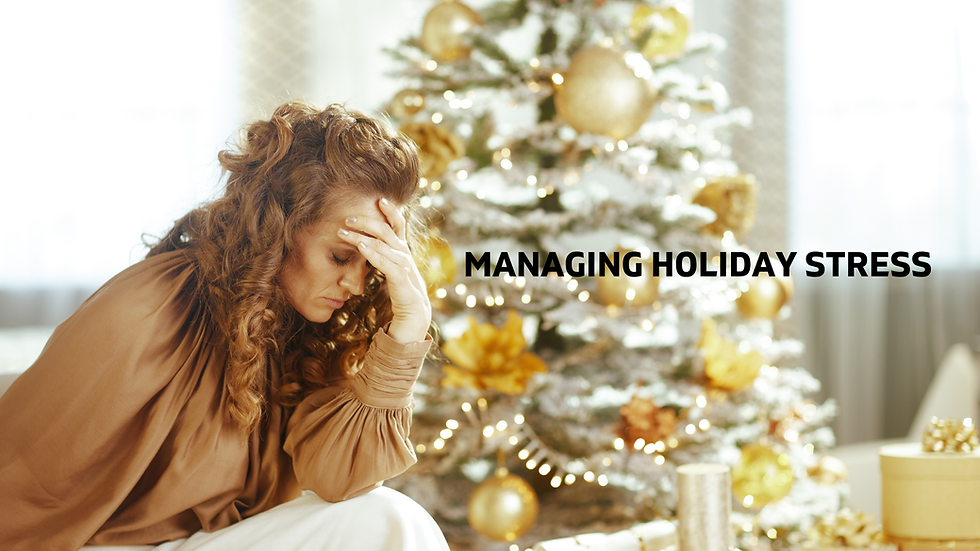Signs Your Back Pain May be Serious
- Dr. Eric Carlsen
- Sep 27, 2022
- 4 min read

In my practice, I treat many patients with back pain. The article below details symptoms and causes for concern when dealing with back pain. I strongly agree that you should seek treatment for these, whether through a chiropractor or physician.
Back Pain
We've all had back pain from time to time. Maybe we lifted luggage that was too heavy, held a baby for too long, or carried a backpack overloaded with books.
Some aches and pain here and there are normal ones that tend to go away after you rest or exercise. But millions of people have ongoing back pain. It's the leading cause of disability in people younger than 45, and many factors can cause it.
You shouldn't be in severe and significant pain for a long time. So, how do you know if your back pain is serious? Read on to find out more.
Here are a few signs that your back pain shouldn't be taken lightly.
1. You fell. Consider if you've had a serious trauma, such as you fell from a height or had a car accident. Even if you've had a minor trauma and are over 50, your health care professional will want to talk to you and examine your back pain. When you're older, falling down even a few steps can cause a fracture. If there is no fracture, you may be told to manage your pain with medicine and physical therapy.
2. You have an ongoing fever. A fever that isn't responsive to medicine and is accompanied by back pain could be a sign of a serious infection. If it's an infection, you may be prescribed antibiotics. You may be told to rest and then resume your daily activities once you feel better. 3. You have tingling or numbness. Here, you have a pins-and-needles feeling in your back that won't go away. It usually means that you have nerve damage or irritation, making it more significant than your typical back pain. You can experience permanent disabilities if you leave this condition untreated. Your health care professional can evaluate you and may order tests to get images of your spine. Treatment depends on your diagnosis.
What is VCF?
Vertebral compression fractures (VCFs) are the most common fractures in people with osteoporosis, a silent condition that weakens your bones and makes them more susceptible to fractures. VCFs affect about 750,000 people annually, says the National Osteoporosis Foundation. And they affect about one-quarter of postmenopausal women in the United States. The risk of this condition increases with age; about 40 percent of women aged 80 and older are affected.
VCFs happen when the bony block or vertebral body in the spine collapses. That can lead to severe pain, deformity, and height loss. These fractures happen more commonly in the middle portion of the spine.
Most of the time, a VCF happens without an injury or pain. It can be caused by something as insignificant as a sneeze. One of the first signs of VCF is height loss. Think about whether your adult children seem taller. Do you need to hem pants you've worn for years? Are you suddenly unable to reach a shelf? These signs may mean you've experienced VCF.
Risks if left untreated
VCFs can be very painful. People who've had one VCF are at five times greater risk of having a second one. The risk for death goes up to more than 50 percent a year after a vertebral fracture.
Each broken vertebra raises the risk for another since it changes how weight is balanced on the spine. You'll experience pain in your back and chest as these muscles have to work more to hold you upright. It gets more difficult to walk. You develop stomach troubles and difficulty breathing. If you do nothing, you may experience disability.
Complications related to VCF include:
Segmental instability
When a fracture leads to a vertebral body collapse of more than 50 percent, there is a risk of segmental instability. Because spinal segments work together, when one segment deteriorates or collapses, it can produce pain and impair daily activities. The instability eventually leads to a quicker degeneration of the spine in the affected area.
Kyphosis
Here, the front of the vertebrae will collapse and "wedge" because of a lack of normal vertebral space. Kyphosis leads to a more rounded thoracic spine, which may be referred to as hunchback or dowager's hump.
Neurological complications
If the fracture causes part of the vertebral body to place pressure on the spinal cord, the nerves and spinal cord can be affected. The normal space between the spinal cord and the beginning of the spinal canal can be decreased if pieces of the broken vertebral body push into the spinal canal.
The narrowing of the spinal canal due to a VCF can injure the spinal nerves or cause problems later from nerve irritation. The lack of space can also lower the blood and oxygen supply to the spinal cord. This can lead to numbness and pain in the affected nerves. The nerves may lose some of their mobility when the space around them decreases, which can lead to nerve irritation and inflammation.
Back pain isn't par for the course as you get older. If you experience any back pain, make sure to speak with your health care professional about your symptoms.
Credit: Healthy Women/Stacey Feintuch




Comments